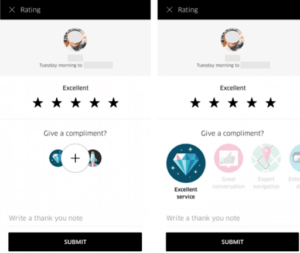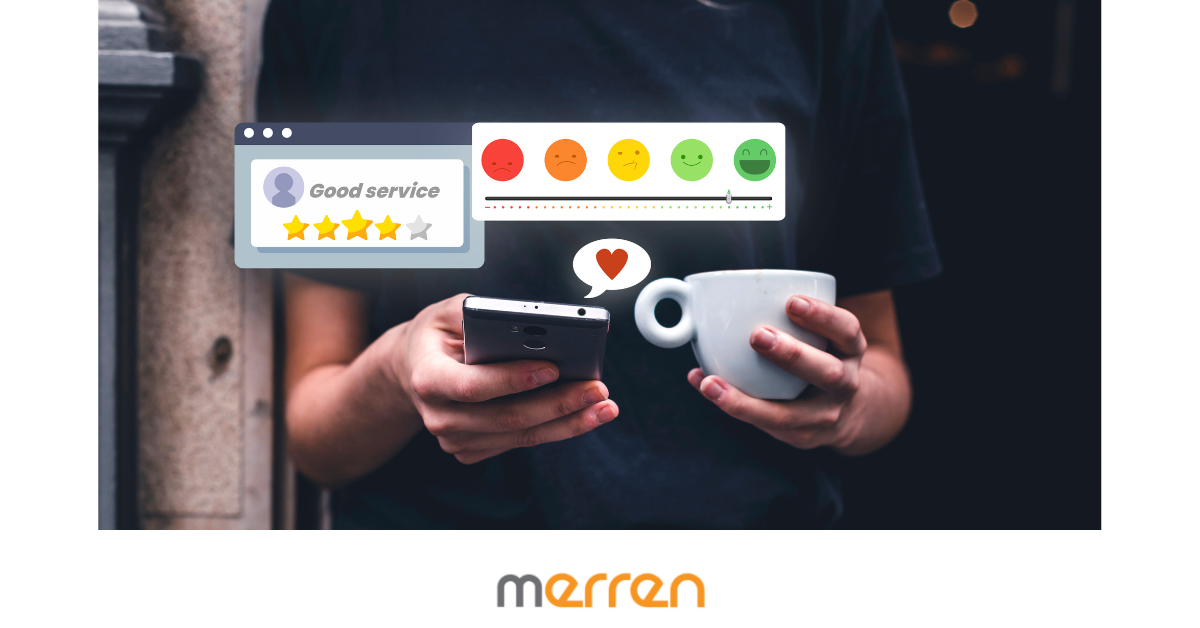Surveys are a common tool for businesses to gather feedback from customers. However, traditional surveys often suffer from low response rates, delayed feedback, and low completion rates. In-moment surveys address these issues by collecting responses in real-time while the customer is engaged with the business, making it more actionable and valuable.
What is an In-Moment Survey?
An in-moment survey is a type of survey that captures feedback from customers at the exact moment they are interacting with a business. This could be when a customer is browsing a website, completing a purchase, or using a product. In-moment surveys are designed to be short and focused, making it easy for customers to complete them quickly.
In-moment surveys differ from traditional surveys in a few key ways:
- Timing: In-moment surveys are conducted in real-time while the customer is interacting with the business, whereas traditional surveys are often conducted after the fact.
- Focus: In-moment surveys are typically focused on a specific interaction or touchpoint with the business, whereas traditional surveys are often more general.
- Length: In-moment surveys are designed to be short, to-the-point, and easy to complete, whereas traditional surveys can be lengthy and time-consuming.
Channels: In-moments surveys are built to collect feedback quickly. Therefore, they do better on channels that allow for quick responses. SMS, Messaging apps like WhatsApp and Facebook Messenger, Chatbots, and Dynamic emails are the best channels to collect such feedback. Read more about omnichannel surveys here.
Benefits of In-Moment Surveys for Businesses
In-moment surveys offer several benefits for businesses:
- Real-time feedback: In-moment surveys provide businesses with customer responses in real-time, allowing them to address customer concerns and issues immediately. Faster feedback makes it more actionable in address customer concerns
- Increased response rates: Because in-moment surveys are short and focused, customers are more likely to complete them.
- More accurate feedback: Because in-moment surveys capture responses while the customer is engaged with the business, the feedback is more accurate and relevant.
- Empowered customers: Asking the right question at the right time makes the customer feel valued and valued. This makes for a more engaged and loyal customer
- Improved customer experience (CX): In-moment surveys help businesses identify pain points in the customer experience across the customer journey and make improvements to address them.
In-moment surveys are a powerful tool for businesses to gather feedback from customers in real-time. By capturing responses while the customer is engaged with the business, such surveys offer more accurate and actionable data that can help businesses improve the customer experience and drive growth.
Capturing Customer Feedback in Real-Time with In-Moment Surveys

In-moment surveys capture responses from customers at the exact moment they are interacting with a business, providing businesses with real-time insights into the customer experience. This feedback can help businesses identify pain points, address customer concerns, and improve the overall customer experience.
How In-Moment Surveys Work
In-moment surveys are typically delivered to customers through a variety of channels, such as email, text message, or in-app messaging. The surveys are designed to be short and easy to complete, often consisting of just a few questions.
Here’s how in-moment surveys capture responses in real-time:
- Customer interaction: The customer interacts with the business, such as making a purchase or browsing a website.
- Trigger: A trigger event occurs, such as the completion of a purchase or the customer spending a certain amount of time on the website.
- Survey delivery: The in-moment survey is delivered to the customer via email, text message, or in-app messaging.
- Feedback collection: The customer completes the survey, providing feedback on their experience with the business.
- Analysis: The responses are analyzed by the business to identify trends and areas for improvement.
Why Real-Time Feedback is Important
Real-time feedback is valuable for businesses for several reasons:
- Immediate action: Real-time responses allows businesses to take immediate action to address customer concerns and issues.
- Accurate responses : Real-time feedback is more accurate and relevant because it captures the customer’s experience while it is still fresh in their mind.
- Improved customer experience: Real-time feedback helps businesses identify pain points in the customer experience and make improvements to address them.
- Competitive advantage: Real-time feedback can provide businesses with a competitive advantage by allowing them to respond quickly to customer needs and concerns.
In-moment surveys capture feedback from customers in real-time, providing businesses with valuable insights into the customer experience. Real-time feedback allows businesses to take immediate action to address customer concerns, improve the customer experience, and gain a competitive advantage.
Common Use Cases for In-Moment Surveys
In-moment surveys are versatile tools that can be used in a variety of contexts to capture feedback from customers. Here are some common use cases for these surveys:
- Post-Purchase Feedback
In-moment surveys are a great way to collect feedback from customers immediately after they make a purchase. This feedback can help businesses identify areas for improvement in their sales process, product offerings, or customer service.
- Website or In-app Experience
In-moment surveys can be used to collect feedback on user experience while they are browsing a website or app. This feedback can help businesses identify pain points in the customer experience, such as confusing navigation or slow load times.
- Event Feedback
In-moment surveys can be used to collect feedback from attendees at events, such as conferences or trade shows. This feedback can help businesses improve the attendee experience and make future events more successful.
- Customer Support Feedback
In-moment surveys can be used to collect feedback from customers after they interact with customer support. This feedback can help businesses identify areas for improvement in their support processes and ensure that customers are satisfied with the level of service they received.
- Product Feedback
In-moment surveys can be used to collect feedback from customers immediately after they use a product. This feedback can help businesses identify areas for improvement in their product offerings and ensure that customers are satisfied with their purchase.
- Net Promoter Score (NPS), Customer Satisfaction (CSAT) or Customer Effort Score (CES) Surveys
In-moment surveys can be used to collect CSAT, NPS, and CES scores from customers, which measure customer loyalty and satisfaction. These scores can help businesses identify their most loyal customers and determine areas for improvement to increase customer satisfaction. Read more about NPS here
How In-Moment Surveys Help Businesses Improve Their Customer Experience

In-moment surveys are powerful tools that can help businesses improve their customer experience in several ways. Here are some of the key benefits of using these surveys:
- Real-Time Feedback
In-moment surveys provide businesses with real-time responses from customers, allowing them to quickly identify and address any issues that arise. This can help businesses improve their customer experience and increase customer satisfaction.
- Customer Insights
In-moment surveys can provide businesses with valuable insights into their customers’ needs and preferences. By understanding what customers like and dislike about their products or services, businesses can make informed decisions about how to improve their offerings.
- Personalization
In-moment surveys can help businesses personalize the customer experience by tailoring their products or services to individual customer needs. By collecting data on customer preferences and behavior, businesses can provide personalized recommendations and offers that are more likely to resonate with customers.
- Reduced Churn
In-moment surveys can help businesses reduce customer churn by identifying and addressing issues before they become major problems. By quickly responding to customer feedback and resolving issues, businesses can improve customer retention and loyalty.
- Competitive Advantage
In-moment surveys can provide businesses with a competitive advantage by allowing them to quickly adapt to changing customer needs and preferences. By staying ahead of the competition, businesses can maintain their market position and attract new customers.
Best Practices for Designing Effective In-Moment Surveys
In-moment surveys can be a valuable tool for capturing real-time feedback from customers, but designing an effective survey can be challenging. Here are some best practices for designing effective these surveys:
- Keep It Short and Simple
These surveys need to be short and easy to complete to encourage high response rates. Use clear, concise language and avoid asking too many questions or including irrelevant information.
- Be Relevant
Make sure that your survey questions are relevant to the customer’s experience. For example, if you’re collecting feedback on a product, ask about the specific features or aspects of the product that the customer has used.
- Use Closed-Ended Questions
Closed-ended questions, such as multiple choice or rating scales, are easier for customers to answer and provide more consistent data. Avoid open-ended questions that can be difficult to analyze.
- Test and Refine
Before launching a survey, test it with a small group of customers to identify any issues or areas for improvement. Refine the survey based on customer feedback to ensure that it is as effective as possible.
- Automate Deployment
To maximize efficiency and accuracy, it’s best to automate the deployment of in-moment surveys. This ensures that customers receive the survey at the right time and on the right platform, whether it be via email, message, text message, or within a mobile app. Automating deployment also allows for real-time analysis of results and quicker response to customer feedback. Read 5 ways how brands can collect feedback using automation
- Timing is Key
The timing of your in-moment survey is important. Make sure that you are collecting feedback at the right moment in the customer’s journey. The right time can be immediately after a purchase or interaction with customer support, after first use, a few days of use.
Designing an effective in-moment survey can be challenging, but by following these best practices, businesses can capture valuable real-time response from customers. Keep the survey short and simple, be relevant, use closed-ended questions, test and refine, provide incentives, and time the survey correctly.
Using In-Moment Survey Responses to Identify and Address Customer Pain Points
In-moment surveys provide businesses with real-time feedback from customers, which can be used to identify and address customer pain points. Here are some strategies businesses can use to make the most of in-moment survey responses:
- Analyze Trends
By analyzing trends in survey responses, businesses can identify common issues and pain points that multiple customers are experiencing. This can help businesses prioritize areas for improvement and make targeted changes to improve the overall customer experience.
- Drill Down into Specific Responses
In addition to analyzing trends, businesses can also drill down into specific responses to identify the root cause of customer pain points. This can involve analyzing free-text responses or following up with customers to gather more information.
- Prioritize Issues
Once businesses have identified customer pain points, they should prioritize them based on their impact on the customer experience and the business’s ability to address them. Some issues may require immediate attention, while others can be addressed over time.
- Make Changes and Follow Up
Once businesses have identified and prioritized customer pain points, they should make targeted changes to address them. After implementing changes, it’s important to follow up with customers to ensure that the changes have had a positive impact on their experience.
- Use Feedback to Drive Continuous Improvement
Finally, businesses should use in-moment survey feedback to drive continuous improvement. By regularly collecting and analyzing feedback, businesses can identify areas for improvement and make iterative changes to improve the overall customer experience.By analyzing trends, drilling down into specific responses, prioritizing issues, making changes, and using feedback to drive continuous improvement, businesses can use in-moment survey responses to improve the overall customer experience.
How In-Moment Surveys Help Businesses Make More Informed Decisions

In-moment surveys provide businesses with real-time feedback from customers, which can be used to make more informed decisions. Here are some ways these survey responses can help businesses make better decisions:
- Identify Trends and Patterns
In-moment surveys allow businesses to collect feedback on a large scale and in real-time, which can help them identify trends and patterns in customer behavior. By analyzing these trends and patterns, businesses can make more informed decisions about product development, marketing, and customer service.
- Evaluate New Products and Services
In-moment surveys can be used to evaluate new products and services before they are launched. By collecting feedback from customers early in the development process, businesses can make changes and improvements before the product or service is released.
- Test Marketing Campaigns
In-moment surveys can also be used to test marketing campaigns before they are launched. By collecting feedback on different marketing messages, businesses can make more informed decisions about which messages are most effective.
- Measure the Impact of Changes
In-moment surveys can be used to measure the impact of changes made to products, services, or the customer experience. By collecting feedback before and after changes are made, businesses can determine whether the changes had a positive impact on the customer experience.
- Inform Strategic Planning
Finally, in-moment survey responses can be used to inform strategic planning. By analyzing customer feedback and identifying areas for improvement, businesses can make more informed decisions about their long-term strategy.In-moment survey responses provide businesses with real-time feedback from customers, which can be used to make more informed decisions. By identifying trends and patterns, evaluating new products and services, testing marketing campaigns, measuring the impact of changes, and informing strategic planning, businesses can use such survey responses to improve their decision-making process.
Common Challenges Associated with In-Moment Surveys and How to Overcome Them
While in-moment surveys can provide valuable real-time feedback from customers, there are some common challenges associated with them. Here are some of the challenges and ways businesses can overcome them:
- Low Response Rates
One of the biggest challenges with in-moment surveys is getting customers to respond. To overcome this, businesses can try the following:
- Keep the survey short and focused on a specific topic.
- Offer an incentive for completing the survey, such as a discount or entry into a contest.
- Use a personalized message to encourage customers to participate.
- Bias in Responses
Another challenge with these surveys is that they can be subject to bias in responses. To overcome this, businesses can try the following:Use randomized survey questions to reduce the impact of order bias.
Use neutral language in survey questions to avoid leading the respondent.
Collect responses from a diverse group of customers to ensure a representative sample.
- Lack of Context
In-moment surveys are typically brief and focused on a specific interaction or experience. This can sometimes result in a lack of context, which can make it difficult to interpret the feedback. To overcome this, businesses can try the following:Collect additional information about the customer and the interaction, such as the customer’s order history or the time of day the interaction occurred.
Use open-ended questions to allow customers to provide additional context.
- Difficulty Analyzing Responses
In-moment survey responses can be difficult to analyze, especially if there are large volumes of responses. To overcome this, businesses can try the following:Use software tools to analyze the data, such as sentiment analysis tools or text analytics software.
Use a team to review the responses and identify trends or patterns.
- Not Acting on Feedback
Finally, one of the biggest challenges with in-moment surveys is not acting on the feedback. To overcome this, businesses can try the following:
- Assign responsibility for reviewing and acting on the feedback to a specific person or team.
- Set up a process for reviewing feedback and taking action.
- Communicate to customers the changes made as a result of their feedback.
By addressing challenges such as low response rates, bias in responses, lack of context, difficulty analyzing responses, and not acting on feedback, businesses can overcome these challenges and make the most of in-moment survey responses.
Ensuring In-Moment Survey Responses are Accurate and Representative
In-moment surveys provide businesses with valuable feedback from customers, but it’s important to ensure that the responses are accurate and representative of the customer base. Here are some ways businesses can ensure their in-moment survey responses are accurate and representative:
- Use Random Sampling
To ensure that survey responses are representative of the customer base, businesses should use random sampling to select participants for the survey. This means selecting participants at random from the customer base, rather than selecting specific individuals or groups.
- Avoid Leading Questions
Leading questions can bias survey responses and provide inaccurate feedback. To avoid this, businesses should use neutral language in survey questions and avoid asking leading questions that suggest a particular answer.
- Use Multiple Channels
Using multiple channels to distribute the survey can help to ensure that the responses are representative of the customer base. For example, businesses can distribute the survey via email, social media, and on their website to reach a wider audience.
- Keep the Survey Short
Long surveys can lead to survey fatigue and low response rates. To ensure that responses are accurate and representative, businesses should keep the survey short and focused on a specific topic.
- Monitor Response Rates
Monitoring response rates can help businesses to identify potential biases in survey responses. If certain groups of customers are not responding to the survey, it may indicate that the survey is not representative of the customer base. Read our ultimate guide on boosting response rates
- Analyze the Data
Analyzing the data can help businesses to identify potential biases and inaccuracies in the survey responses. Using tools such as sentiment analysis or text analytics software can help to identify patterns and trends in the data.
- Take Action on Feedback
Finally, taking action on the feedback is important to ensure that the survey responses are accurate and representative. By making changes based on the feedback, businesses can show customers that their opinions are valued and make improvements to the customer experience.
Examples of Businesses Using In-Moment Surveys for Customer Feedback
In-moment surveys have become increasingly popular among businesses looking to improve their customer experience and drive growth. Here are some examples of businesses that have successfully used in-moment surveys to gather customer feedback and make improvements:
1. Starbucks
Starbucks has been using in-moment surveys through its mobile app since 2015. The app prompts customers to provide feedback after they make a purchase, allowing Starbucks to collect real-time feedback on its products and service. The feedback has been used to improve everything from the taste of the coffee to the efficiency of the ordering process.
2. Airbnb
Airbnb uses in-moment surveys to gather feedback from guests about their stay. The survey is sent via email shortly after the guest checks out, allowing Airbnb to gather feedback while the experience is still fresh in the guest’s mind. The feedback is used to improve the overall guest experience, as well as to identify any issues that may need to be addressed.
3. Uber
Uber uses in-moment surveys to gather feedback from riders about their experience. After a ride is completed, riders are prompted to rate their driver and provide feedback on their experience. This feedback is used to improve the overall rider experience and ensure that drivers are meeting the company’s standards.

4. Marriott International
Marriott International uses in-moment surveys to gather feedback from guests about their stay. The survey is sent via email shortly after the guest checks out, allowing Marriott to gather feedback while the experience is still fresh in the guest’s mind. The feedback is used to improve the overall guest experience, as well as to identify any issues that may need to be addressed.
5. Delta Airlines
Delta Airlines uses in-moment surveys to gather feedback from passengers about their flight experience. The survey is sent via email shortly after the flight, allowing Delta to gather responses while the experience is still fresh in the passenger’s mind. These responses is used to improve the overall passenger experience, as well as to identify any issues that may need to be addressed.
In-moment surveys are a powerful tool for businesses looking to improve their customer experience and drive growth. From Starbucks to Delta Airlines, many businesses have successfully used in-moment surveys to gather real-time feedback from customers and make improvements. By following best practices for survey design, monitoring response rates, and taking action on feedback, businesses can use in-moment surveys to gain valuable insights into the customer experience and make data-driven decisions to improve it.





